A Portrait of the Artist as a Young Man starts with Stephen Dedalus as a baby, moves to his early school days in Clongowes Wood College, and continues through adolescence, the University and emigration.
The life of Stephen Dedalus parallels that of James Joyce with their numerous moves across and around the city of Dublin.
This run aims to cover most of this ground, in much of the same order in which the narrative flows in the book. As on all of these runs, the route has to be runnable and enjoyable and some editing takes place as a result.
It might be possible to run to Clongowes Wood College, but it would not be all that interesting and likewise, the the trip that Stephen and his father Simon make by train to Cork could not be included, although a Cork run, Stephen was once again seated beside his father, is included in the website and you can read it here.
Likewise the end of the run is the tip of the Bull Wall. The book physically ends back on the North Wall, but it is more appropriate to finish the run looking out to sea with the channel at the mouth of the River Liffey, where young Stephen and James Joyce sail to the United Kingdom and on to the continent.
Welcome, O life! I go to encounter for the millionth time the reality of experience and to forge in the smithy of my soul the uncreated conscience of my race.
I have picked out some of my favourite passages from the book, to go along with photographs taken along the run.
Links to the route map are provided at the end of this article.
During the first part of the summer in Blackrock uncle Charles was Stephen’s constant companion. Uncle Charles was a hale old man with a well tanned skin, rugged features and white side whiskers. On week days he did messages between the house in Carysfort Avenue and those shops in the Main Street of the town with which the family dealt. Stephen was glad to go with him on these errands for uncle Charles helped him very liberally to handfuls of whatever was exposed in open boxes and barrels outside the counter. He would sieze a handful of grapes and sawdust or three or four American apples and thrust them generously into his grandnephew’s hand while the shopman smiled uneasily; and on Stephen’s feigning reluctance to take them, he would frown and say:
— Take them, sir. Do you hear me, sir? They’re good for your bowels.
The run starts in Blackrock Park rather than at the Joyce family home of Leoville, on Carysfort Avenue. In Joyce’s time Leoville was in the middle of a row of houses. In the 1980’s a four lane bypass sliced through Carysfort Avenue at the side of Leoville. The run starts at the entrance to the Park as crossing the Blackrock Bypass is fraught on a good day, never mind at the start of a half marathon.

Two great yellow caravans had halted one morning before the door and men had come tramping into the house to dismantle it. The furniture had been hustled out through the front garden which was strewn with wisps of straw and rope ends and into the huge vans at the gate. When all had been safely stowed the vans had set off noisily down the avenue: and from the window of the railway carriage, in which he had sat with his redeyed mother, Stephen had seen them lumbering heavily along the Merrion Road.
This photo is taken from the Merrion Road looking towards the disused Merrion Train Station. At this point the railway and road run parallel and it is here that I think young Stephen could have seen the yellow caravans passing into the City.
This move was pivotal in Joyce’s life as he left the relative prosperity of life in the southern suburbs. His redeyed mother was to die ten years later, succumbing to the throttling decline into hardship and poverty on the inner northside of the City.
You can read the an article on all of James Joyce’s houses, Why are we on the move again if it’s a fair question? here.
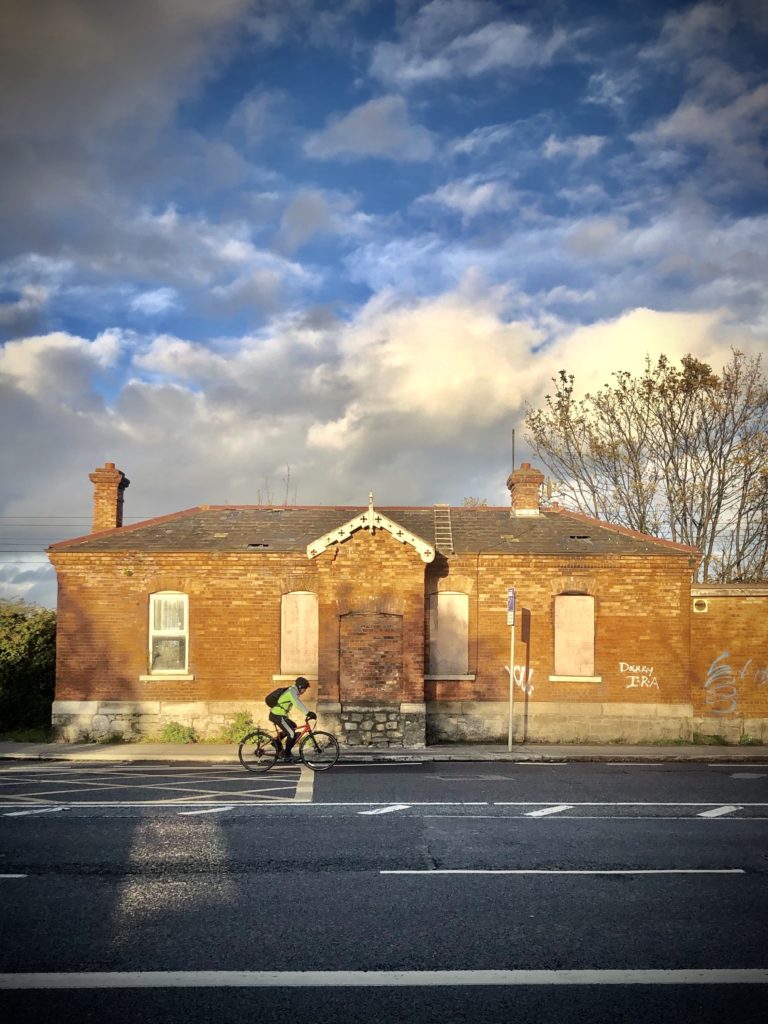
—One difficulty, said Stephen, in esthetic discussion is to know whether words are being used according to the literary tradition or according to the tradition of the marketplace. I remember a sentence of Newman’s in which he says of the Blessed Virgin that she was detained in the full company of the saints. The use of the word in the marketplace is quite different. I hope I am not detaining you.
—Not in the least, said the dean politely.
—No, no, said Stephen smiling, I mean ….
—Yes, yes: I see, said the dean quickly, I quite catch the point: detain.
He thrust forward his under jaw and uttered a dry short cough.
—To return to the lamp, he said, the feeding of it is also a nice problem. You must choose the pure oil and you must be careful when you pour it in not to overflow it, not to pour in more than the funnel can hold.
—What funnel? asked Stephen.
—The funnel through which you pour the oil into your lamp.
—That? said Stephen. Is that called a funnel? Is it not a tundish?
—What is a tundish?—That. The … the funnel.
—Is that called a tundish in Ireland? asked the dean. I never heard the word in my life.
—It is called a tundish in Lower Drumcondra, said Stephen laughing, where they speak the best English.
—A tundish! said the dean reflectively. That is a most interesting word. I must look that word up. Upon my word I must.
The nature of this run is that events take place in. different order to those in the novel, so we get to the University before we get to Belvedere. The University is now the Museum of Literature Ireland, where Joyce is widely celebrated.
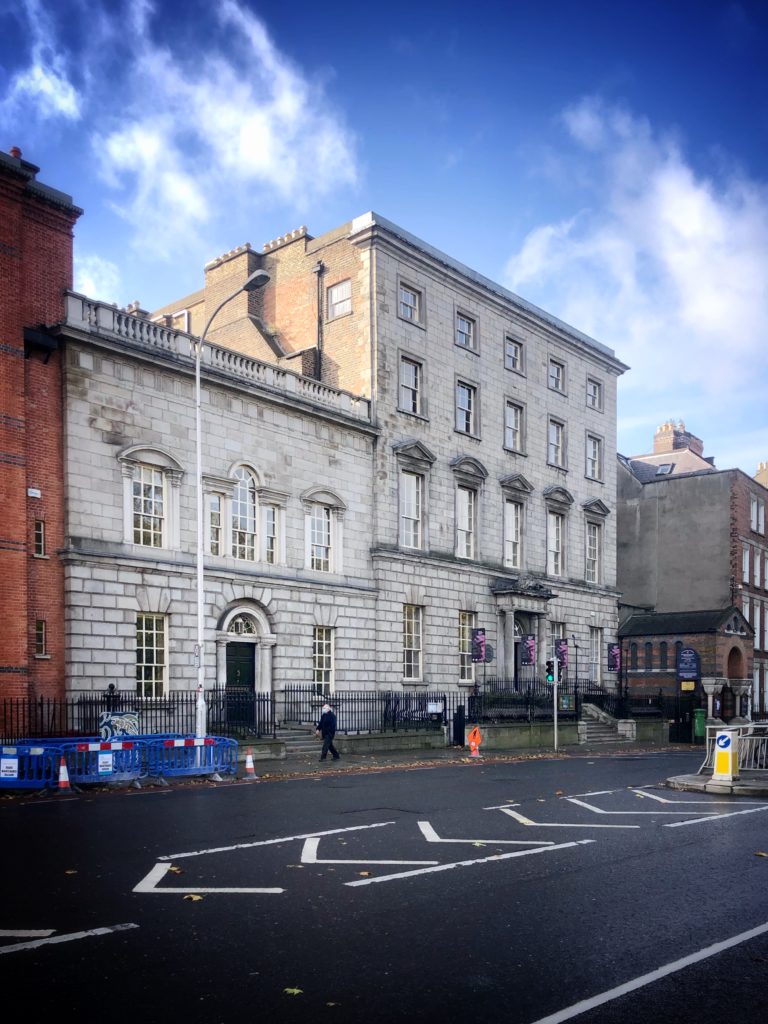
—I walked bang into him, said Mr Dedalus for the fourth time, just at the corner of the square.
—Then I suppose, said Mrs Dedalus, he will be able to arrange it. I mean, about Belvedere.
—Of course he will, said Mr Dedalus. Don’t I tell you he’s the provincial of the order now?
—I never liked sending him to the christian brothers myself, said Mrs. Dedalus.
—Christian brothers be damned! said Mr Dedalus. Is it with Paddy Stink and Mickey Mud? No, let him stick to the jesuits in God’s name since he began with them. They’ll be of service to him in after years. Those are the fellows that can get you a position.
—And they’re a very rich order aren’t they, Simon?
—Rather. They live well, I tell you. You saw their table at Clongowes. Fed up, by God, like gamecocks.
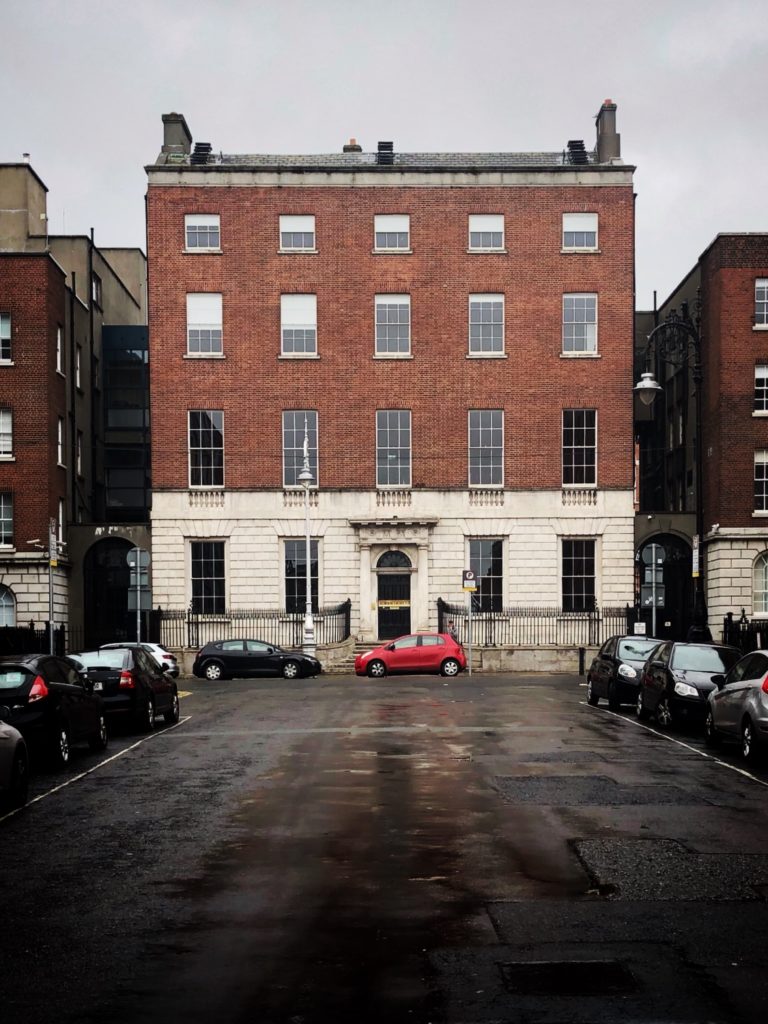
The lane behind the terrace was waterlogged and as he went down it slowly, choosing his steps amid heaps of wet rubbish, he heard a mad nun screeching in the nuns’ madhouse beyond the wall:—Jesus! O Jesus! Jesus! He shook the sound out of his ears by an angry toss of his head and hurried on, stumbling through the mouldering offal, his heart already bitten by an ache of loathing and bitterness. His father’s whistle, his mother’s mutterings, the screech of an unseen maniac were to him now so many voices offending and threatening to humble the pride of his youth. He drove their echoes even out of his heart with an execration: but as he walked down the avenue and felt the grey morning light falling about him through the dripping trees and smelt the strange wild smell of the wet leaves and bark his soul was loosed of her miseries.
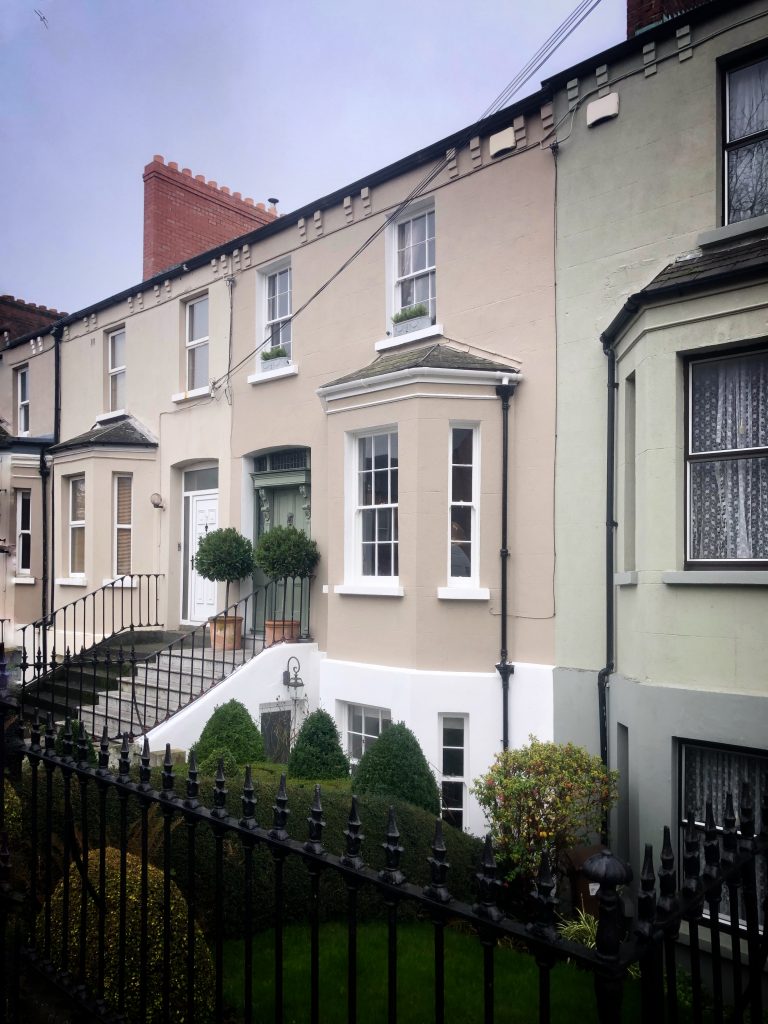
He turned seaward from the road at Dollymount and as he passed on to the thin wooden bridge he felt the planks shaking with the tramp of heavily shod feet. A squad of christian brothers was on its way back from the Bull and had begun to pass, two by two, across the bridge. Soon the whole bridge was trembling and resounding. The uncouth faces passed him two by two, stained yellow or red or livid by the sea and, as he strove to look at them with ease and indifference, a faint stain of personal shame and commiseration rose to his own face. Angry with himself he tried to hide his face from their eyes by gazing down sideways into the shallow swirling water under the bridge but he still saw a reflection therein of their topheavy silk hats and humble tapelike collars and loosely hanging clerical clothes.
Much of Dublin has changed since Joyce’s time, but the wonderful wooden bridge in Clontarf has changed little, and it’s straight over it and along to the end of the run.
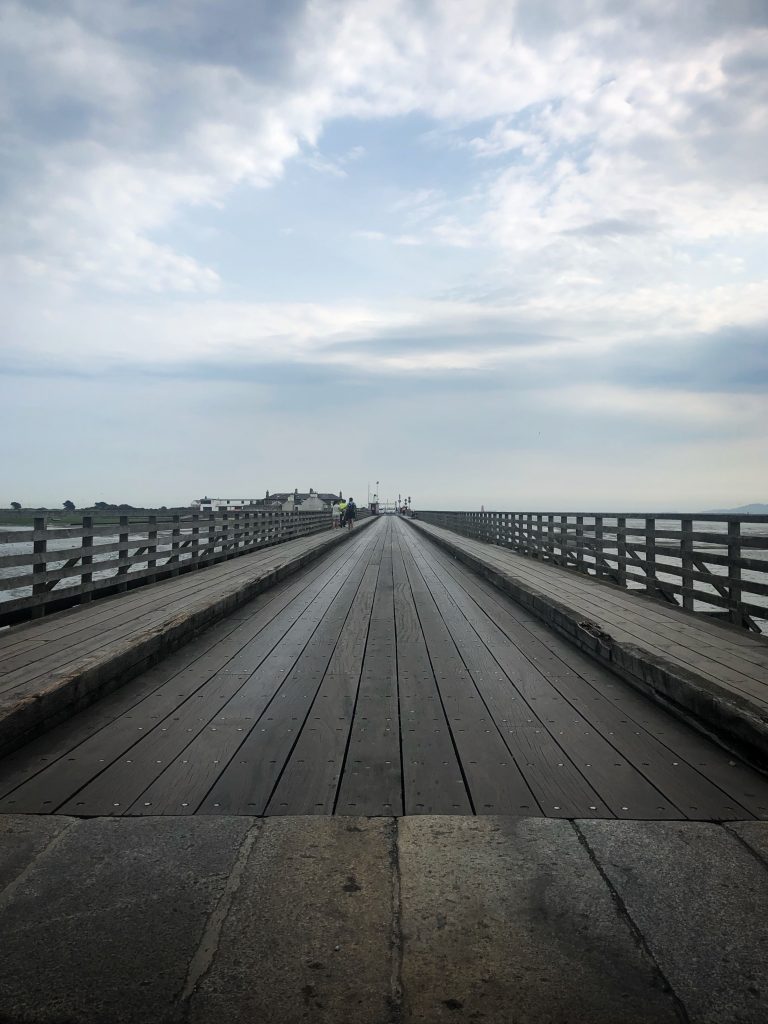
Disheartened, he raised his eyes towards the slowdrifting clouds, dappled and seaborne. They were voyaging across the deserts of the sky, a host of nomads on the march, voyaging high over Ireland, westward bound. The Europe they had come from lay out there beyond the Irish Sea, Europe of strange tongues and valleyed and woodbegirt and citadelled and of entrenched and marshalled races. He heard a confused music within him as of memories and names which he was almost conscious of but could not capture even for an instant; then the music seemed to recede, to recede, to recede: and from each receding trail of nebulous music there fell always one longdrawn calling note, piercing like a star the dusk of silence. Again! Again! Again! Again! A voice from beyond the world was calling.
—Hello, Stephanos!
—Here comes The Dedalus!
—Ao! … Eh, give it over, Dwyer, I’m telling you or I’ll give you a stuff in the kisser for yourself …. Ao!
—Good man, Towser! Duck him!
—Come along, Dedalus! Bous Stephanoumenos! Bous Stephaneforos!—Duck him! Guzzle him now, Towser!
—Help! Help! … Ao!
He recognised their speech collectively before he distinguished their faces. The mere sight of that medley of wet nakedness chilled him to the bone. Their bodies, corpsewhite or suffused with a pallid golden light or rawly tanned by the sun, gleamed with the wet of the sea. Their divingstone, poised on its rude supports and rocking under their plunges, and the roughhewn stones of the sloping breakwater over which they scrambled in their horseplay gleamed with cold wet lustre. The towels with which they smacked their bodies were heavy with cold seawater: and drenched with cold brine was their matted hair.
Although Stephen Dedalus returns to the city after his walk to the Bull Wall, it always seems to me that it is here that he makes his decision to leave.
Old father, old artificer, stand me now and ever in good stead.
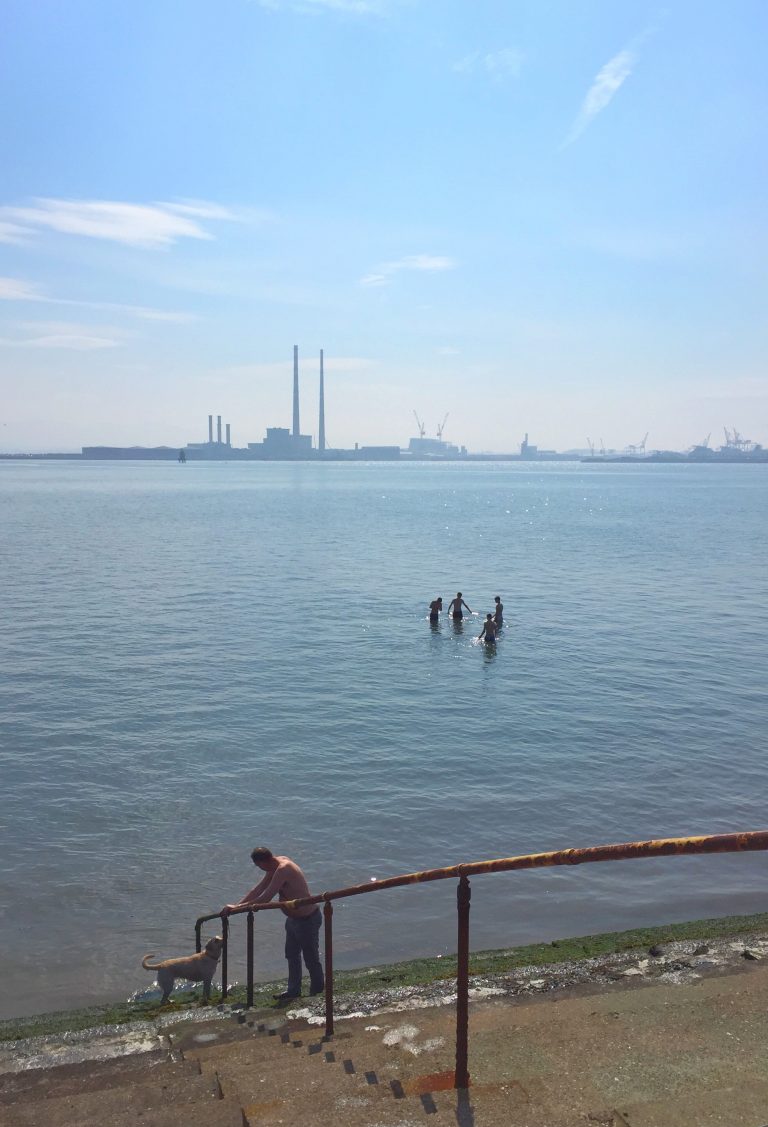
Joyce, J. (2007) A Portrait of the Artist as a Young Man, Authoritative Text, Backgrounds and Contexts Criticism. Edited by John Paul Riquelme, Hans Walter Gabler, and Walter Hettche. New York, United States: Norton, W. W. & Company.
You can see more on my research output on the Technological University Dublin repository Arrow, here